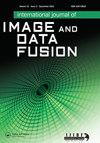2000 - 2015年中国大陆海岸线变化
IF 1.8
Q3 REMOTE SENSING
International Journal of Image and Data Fusion
Pub Date : 2021-06-30
DOI:10.1080/19479832.2021.1943011
引用次数: 4
摘要
摘要海岸线是海岸带人类开发利用的指示线。随着人类发展和气候变化的加速,沿海地区的变化比以往任何时候都更加活跃。快速提取海岸线并实时监测其变化,对于制定海岸带开发利用规划具有重要意义。在本研究中,我们开发了一种基于边缘检测和面向对象的复杂情况下的海岸线自动提取技术。同时,在陆地卫星TM影像的基础上,实现了中国大陆海岸线的提取。精度比较表明,在两个像素半径内提取的海岸线和参考海岸线之间的匹配委托误差和遗漏误差分别为8%和5%。总体质量高达87%,总体制图精度达到1:250000。我们还构建了海岸线开发利用指标体系,分析了2000-2005年大陆海岸线的变化。研究发现,自然和经济条件影响着海岸线的变化,其中中国北方的海洋扩张趋势更集中在更大的规模上,海岸线的开发利用负荷更高,而中国南方地区相对稳定。本文章由计算机程序翻译,如有差异,请以英文原文为准。
Coastline changes in mainland China from 2000 to 2015
ABSTRACT The coastline is an indicator line for human exploitation in the coastal zone. With the acceleration of human development and climate change, changes in the coastal zone are more active than ever. Quickly extracting the coastline and monitoring its changes in real time is of great significance for enacting the development and utilisation planning of coastal zones. In this research, we developed an automatic-coastline-extraction technique based on edge detection and object-oriented in complex situations. Meanwhile, on the basis of Landsat TM images, it realised the extraction of the mainland China coastline. Accuracy comparison showed that the matching commission and omission errors between the extracted and reference coastlines within two-pixel radii were 8% and 5%, respectively. The Overall quality reached as high as 87%, achieving an overall mapping accuracy of 1:250,000. We also constructed the index system of coastline exploitation and utilisation to analyse changes of the continental coastline from 2000 to 2015. It was found that natural and economic conditions affected coastline changes, in which the sea-expansion trend of northern China was more concentrated on a larger scale and with a higher load in coastline development and utilisation, while the southern region of China was relatively stable.
求助全文
通过发布文献求助,成功后即可免费获取论文全文。
去求助
来源期刊

International Journal of Image and Data Fusion
REMOTE SENSING-
CiteScore
5.00
自引率
0.00%
发文量
10
期刊介绍:
International Journal of Image and Data Fusion provides a single source of information for all aspects of image and data fusion methodologies, developments, techniques and applications. Image and data fusion techniques are important for combining the many sources of satellite, airborne and ground based imaging systems, and integrating these with other related data sets for enhanced information extraction and decision making. Image and data fusion aims at the integration of multi-sensor, multi-temporal, multi-resolution and multi-platform image data, together with geospatial data, GIS, in-situ, and other statistical data sets for improved information extraction, as well as to increase the reliability of the information. This leads to more accurate information that provides for robust operational performance, i.e. increased confidence, reduced ambiguity and improved classification enabling evidence based management. The journal welcomes original research papers, review papers, shorter letters, technical articles, book reviews and conference reports in all areas of image and data fusion including, but not limited to, the following aspects and topics: • Automatic registration/geometric aspects of fusing images with different spatial, spectral, temporal resolutions; phase information; or acquired in different modes • Pixel, feature and decision level fusion algorithms and methodologies • Data Assimilation: fusing data with models • Multi-source classification and information extraction • Integration of satellite, airborne and terrestrial sensor systems • Fusing temporal data sets for change detection studies (e.g. for Land Cover/Land Use Change studies) • Image and data mining from multi-platform, multi-source, multi-scale, multi-temporal data sets (e.g. geometric information, topological information, statistical information, etc.).
 求助内容:
求助内容: 应助结果提醒方式:
应助结果提醒方式:


